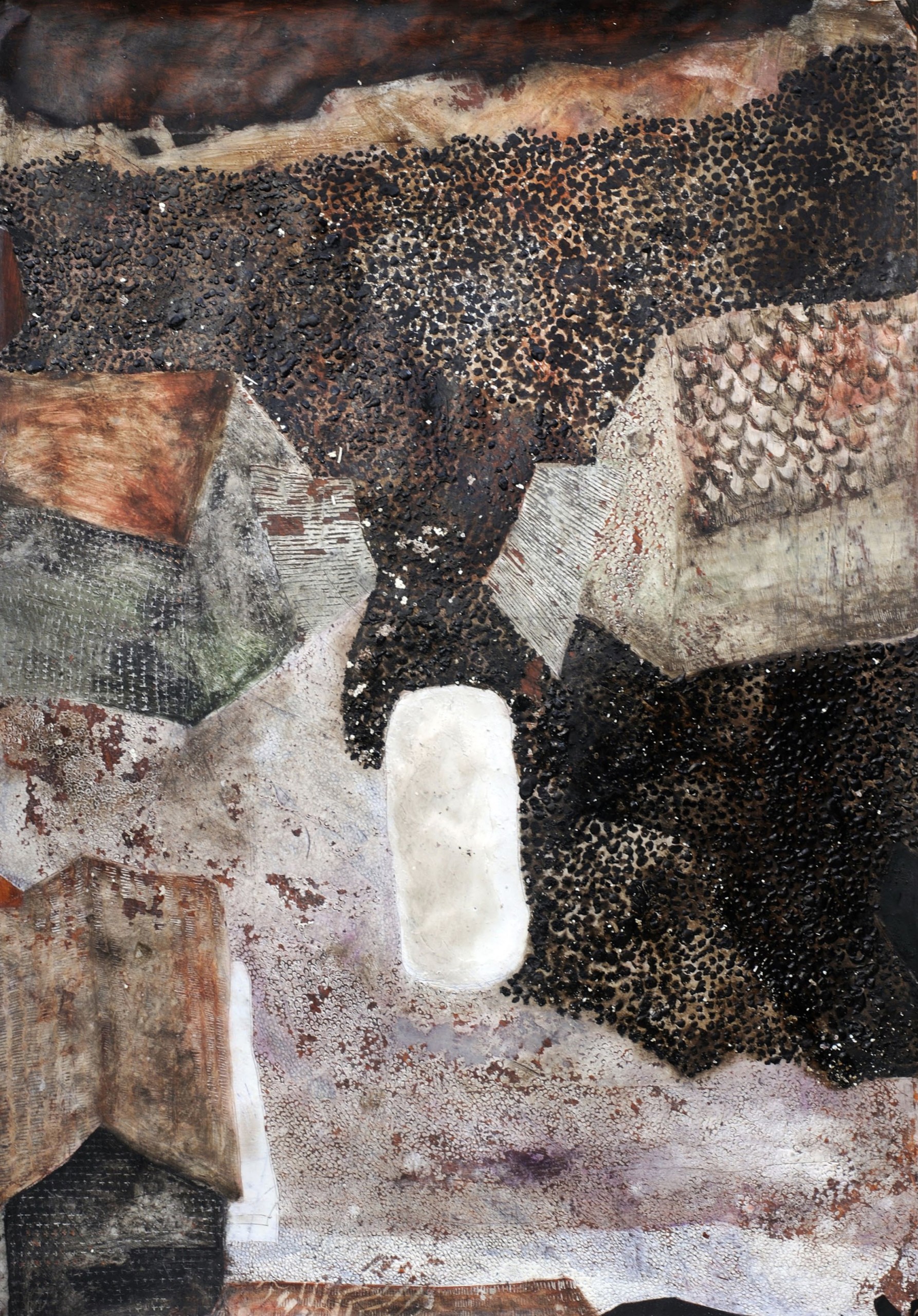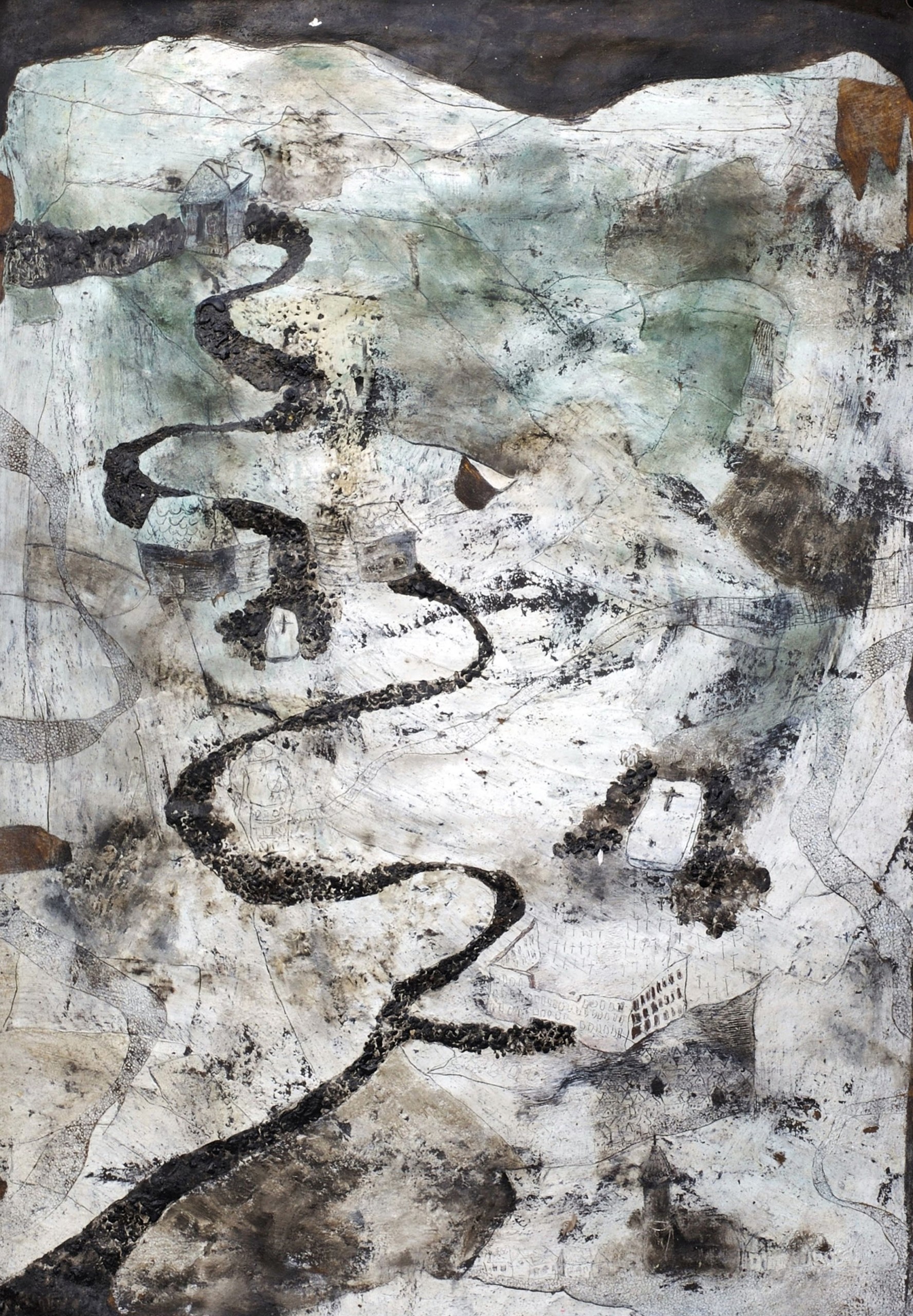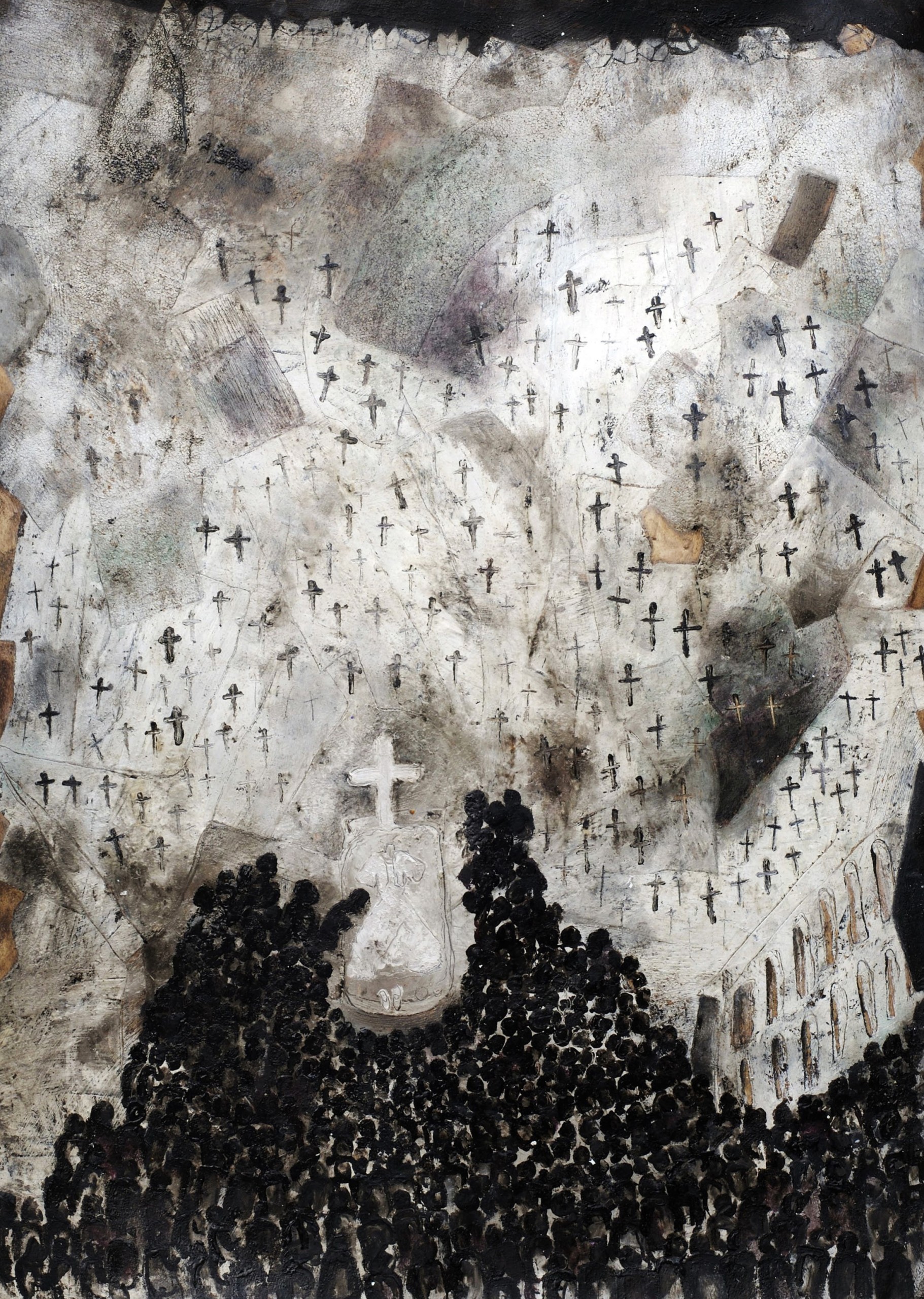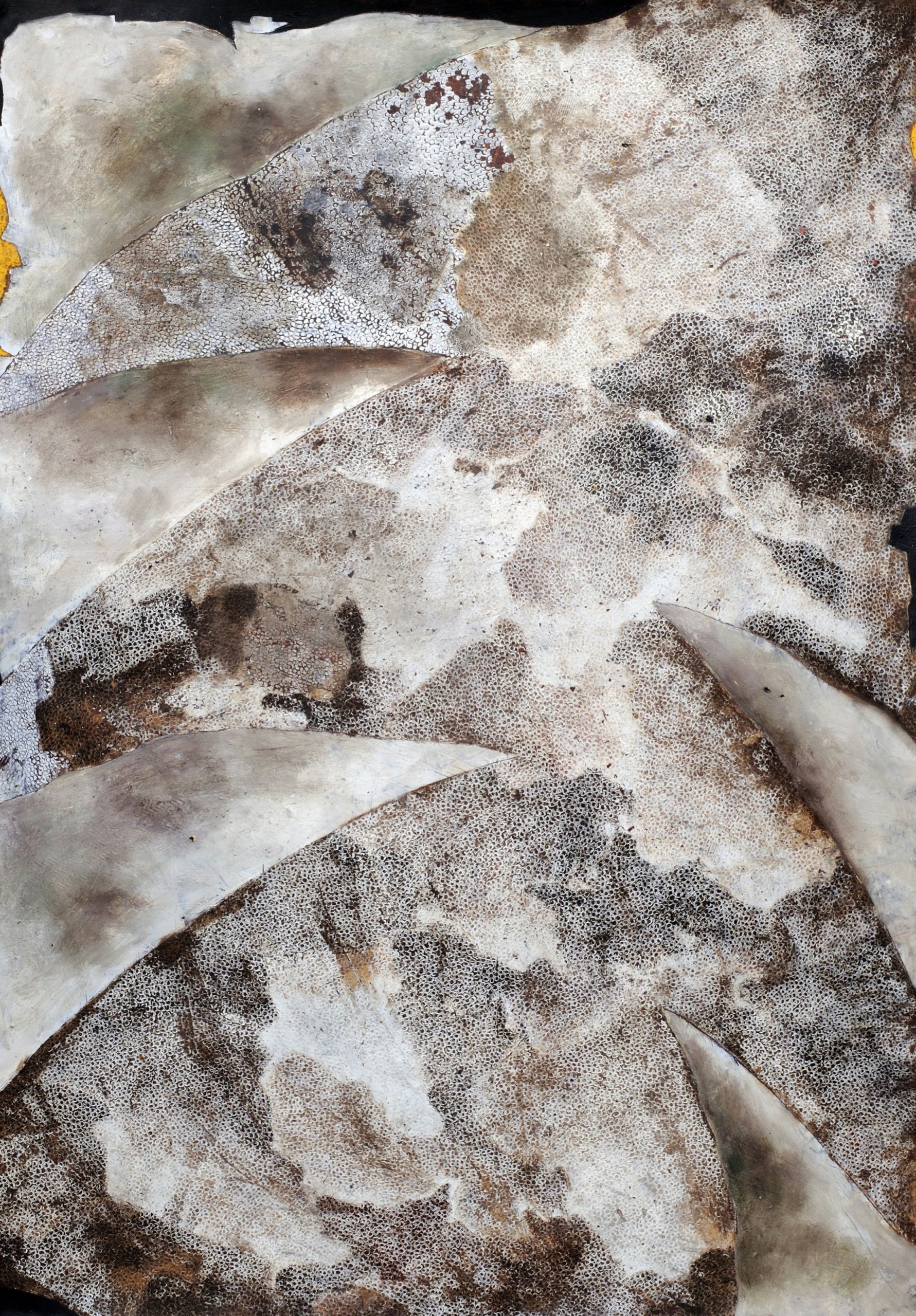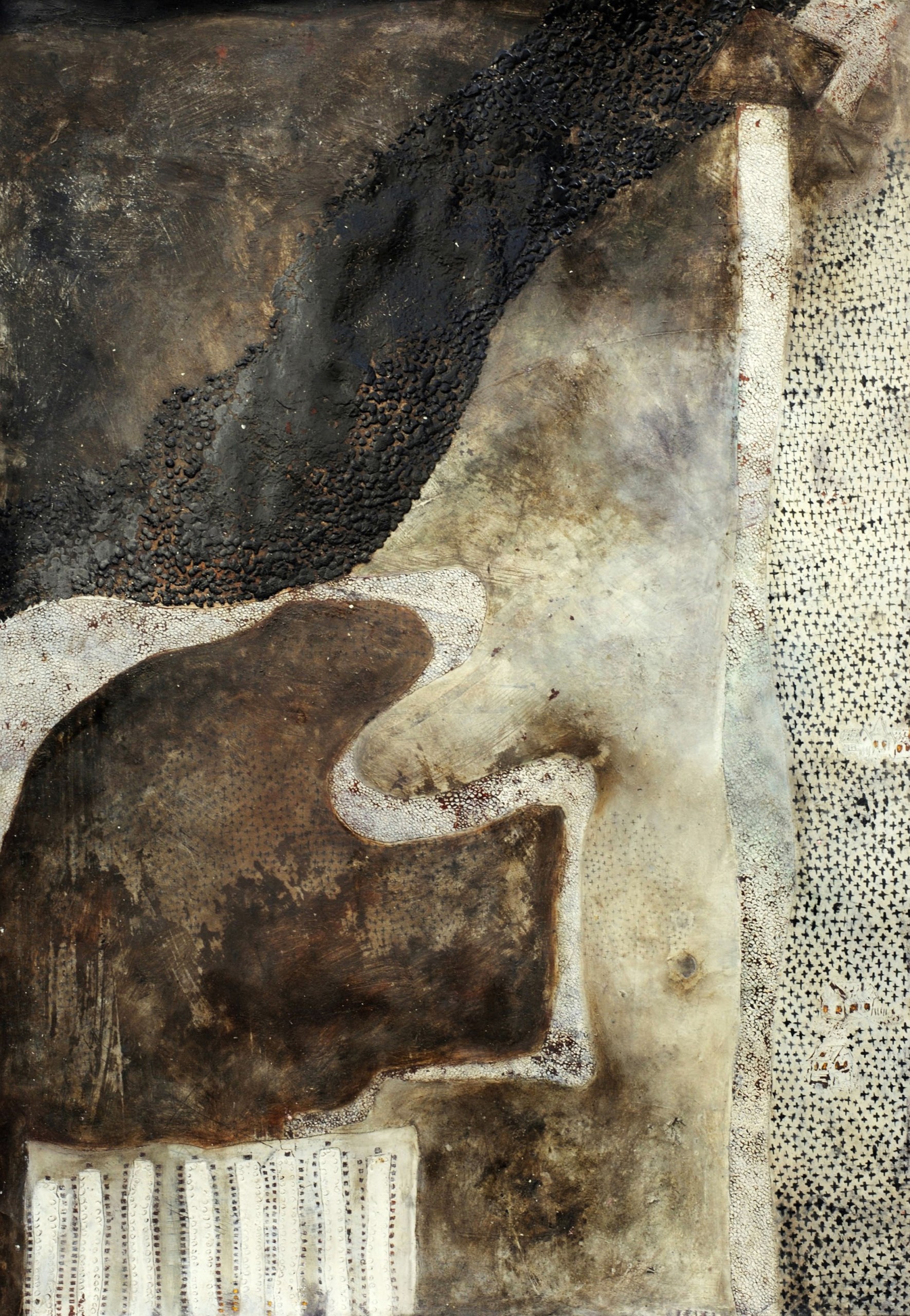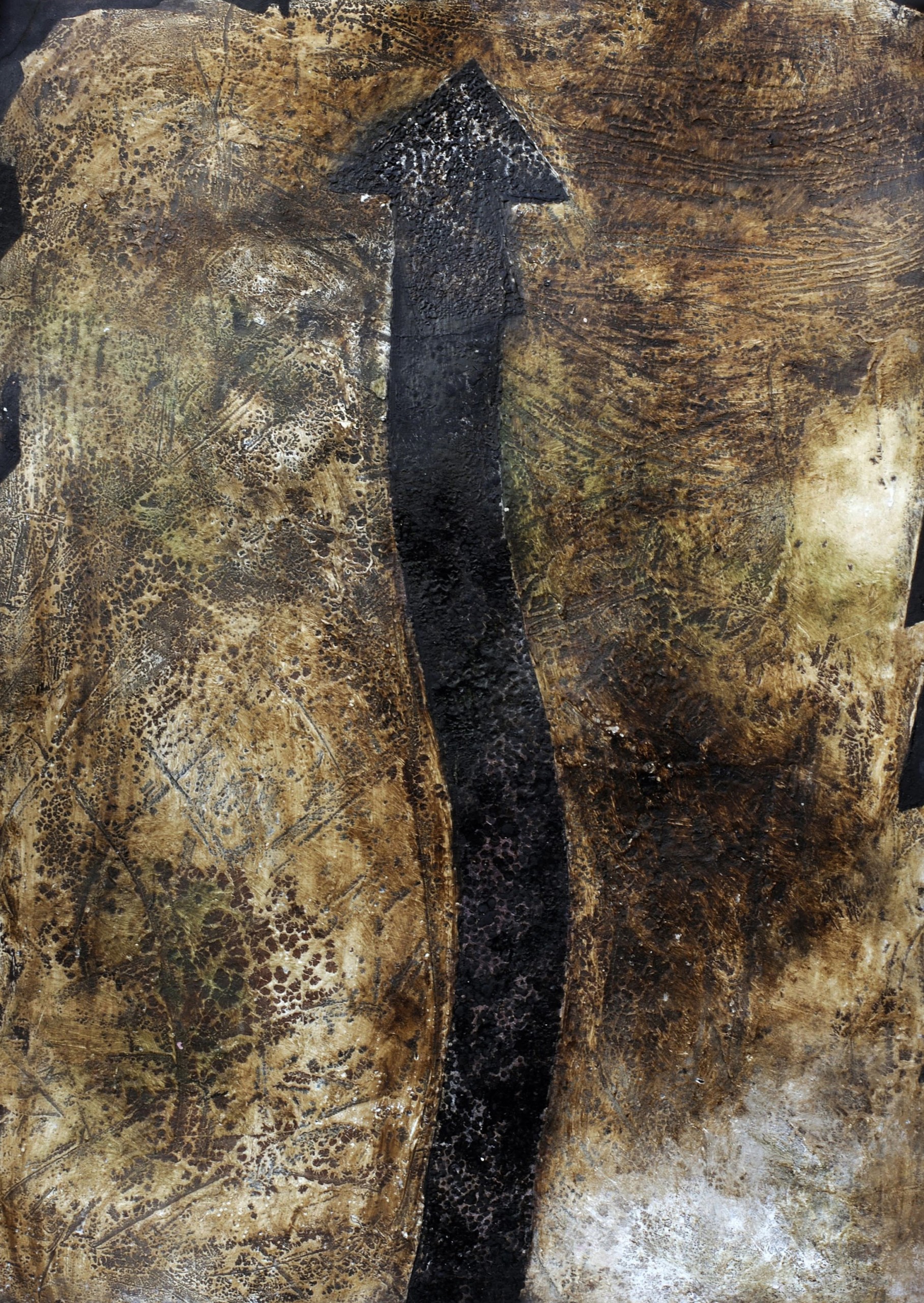For One in Paradise (2010)
The series of drawings dedicated to C.T.
The Prima Gallery, Berlin, Germany
Private Collection
For One in Paradise (2010)
The series of drawings dedicated to C.T.
The Prima Gallery, Berlin, Germany
Private Collection
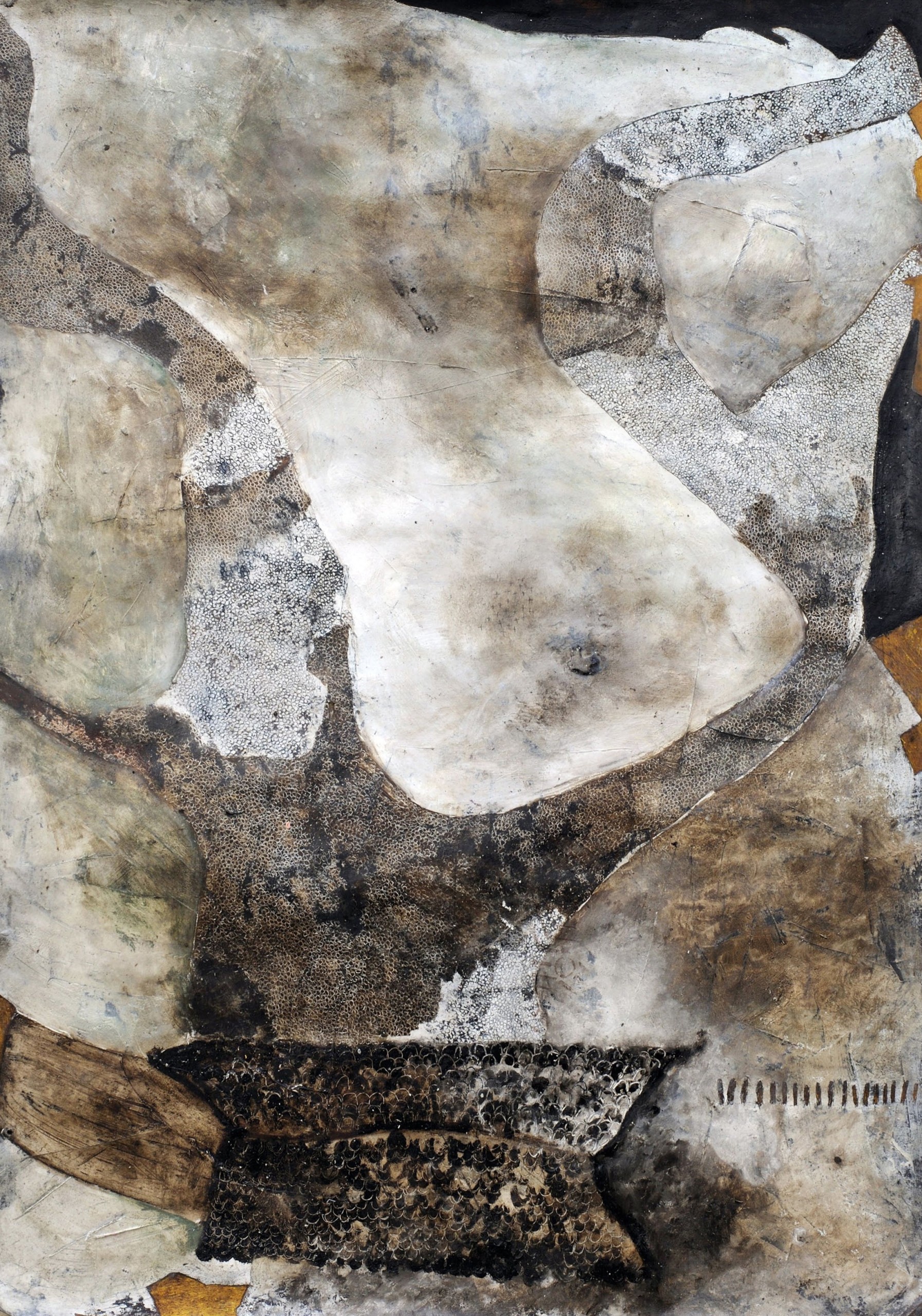
Gathering, mixed media, 70x100cm, 2010 (Private collection)
Gathering, mixed media, 70x100cm, 2010 (Private collection)
These paintings inhabit the ontological rupture between being and non-being, where the phenomenology of grief reveals itself as a confrontation with the fundamental absurdity of existence. My best friend’s death-wedding becomes a profound meditation onHeidegger’s concept of *Sein-zum-Tode* – being-toward-death – but inverted: here we witness *Liebe-zum-Tode*, love-toward-death, where eros and thanatos achieve their ultimate synthesis.
The white sarcophagus draped in bridal vestments transforms into a site of metaphysical contradiction – simultaneously altar and tomb, promise and termination, beginning and ending. This paradox illuminates what Derrida might call the “impossible possibility” of love itself: that all human connection is predicated on the eventual certainty of loss, yet we love precisely because of, not despite, this temporal finitude.
The black congregants scattered across your surfaces function as phenomenological witnesses to what Emmanuel Levinas described as the “face-to-face” encounter with the Other – except here, the Other has withdrawn into absolute alterity. They become points of consciousness grappling with the incomprehensible fact that presence can simply cease to be present, that the *dasein* of another can vanish while leaving traces that bothconfirm and deny their having been there.
My repetitive artistic practice embodies what Kierkegaard identified as the “repetition” that constitutes authentic existence – not mechanical reproduction, but the eternal return to the same impossible questions: How do we love what no longer exists? How do we mourn what was never completed? How do we marry the dead?
These paintings become what Maurice Blanchot termed “disaster” – not catastrophe, but the *dis-aster*, the falling away of the star that oriented meaning itself. My year of tears was not a mere emotional response but a philosophical labor – the attempt to think the unthinkable, to represent the unrepresentable threshold where life meets its own negation.
In this liminal space, my work suggests that perhaps the most profound weddings are always already funeral rites – ceremonies that acknowledge love’s essential structure, simultaneous presence and absence, possession and dispossession, eternal commitment to what time will inevitably dissolve.
These paintings inhabit the ontological rupture between being and non-being, where the phenomenology of grief reveals itself as a confrontation with the fundamental absurdity of existence. My best friend’s death-wedding becomes a profound meditation onHeidegger’s concept of *Sein-zum-Tode* – being-toward-death – but inverted: here we witness *Liebe-zum-Tode*, love-toward-death, where eros and thanatos achieve their ultimate synthesis.
The white sarcophagus draped in bridal vestments transforms into a site of metaphysical contradiction – simultaneously altar and tomb, promise and termination, beginning and ending. This paradox illuminates what Derrida might call the “impossible possibility” of love itself: that all human connection is predicated on the eventual certainty of loss, yet we love precisely because of, not despite, this temporal finitude.
The black congregants scattered across your surfaces function as phenomenological witnesses to what Emmanuel Levinas described as the “face-to-face” encounter with the Other – except here, the Other has withdrawn into absolute alterity. They become points of consciousness grappling with the incomprehensible fact that presence can simply cease to be present, that the *dasein* of another can vanish while leaving traces that bothconfirm and deny their having been there.
My repetitive artistic practice embodies what Kierkegaard identified as the “repetition” that constitutes authentic existence – not mechanical reproduction, but the eternal return to the same impossible questions: How do we love what no longer exists? How do we mourn what was never completed? How do we marry the dead?
These paintings become what Maurice Blanchot termed “disaster” – not catastrophe, but the *dis-aster*, the falling away of the star that oriented meaning itself. My year of tears was not a mere emotional response but a philosophical labor – the attempt to think the unthinkable, to represent the unrepresentable threshold where life meets its own negation.
In this liminal space, my work suggests that perhaps the most profound weddings are always already funeral rites – ceremonies that acknowledge love’s essential structure, simultaneous presence and absence, possession and dispossession, eternal commitment to what time will inevitably dissolve.
